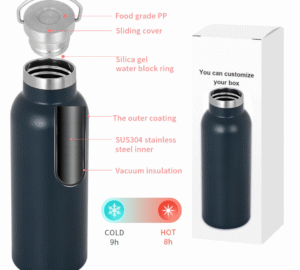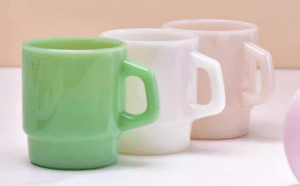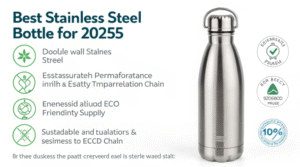Your favorite stainless steel bottle has a funky smell that won't go away. No matter how much you rinse it, your water has a weird, stale taste. It's frustrating.
The best way to clean a stainless steel bottle is to wash it daily with warm, Special-purpose dishwashing liquid and a bottle brush. For a deep clean to remove odors and stains, use a paste of baking soda and water or let it soak with diluted white vinegar.

I've helped so many clients create beautiful, custom-designed stainless steel bottles. The worst feeling is seeing them come back a few months later with the design faded and the inside looking sad. Proper cleaning is about more than just hygiene. It is about protecting your investment and keeping the bottle you love looking and functioning like new for years. A little bit of care goes a very long way. Let's get into how to do it right.
What is the Best Way to Clean a Stainless Steel Water Bottle?
You rinse your bottle daily, but a weird film is building up inside. Just using soap and water doesn't seem to be enough to get it truly clean and fresh.
The best method is a two-part approach. For daily cleaning, use warm water, dish soap, and a bottle brush. For a weekly deep clean, let the bottle soak with a tablespoon of baking soda in warm water to completely eliminate any lingering odors or tastes.
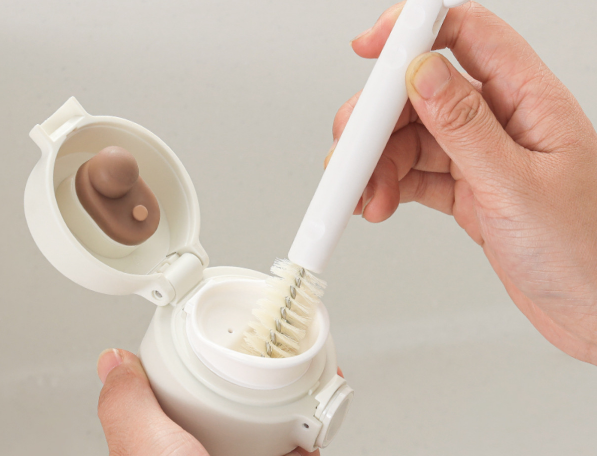
When I work with clients like Emma, who design custom products, we talk a lot about the user's experience. A beautiful bottle that's hard to clean won't be used for long. The key is making it a simple routine.
For Daily Use
The most important tool you can own is a long bottle brush. It is the only way to physically scrub the interior walls and bottom of the bottle, where biofilm can start to build up. Just swishing soapy water around isn't enough. After scrubbing with Special-purpose dishwashing liquid and water, rinse it well and let it air dry completely, upside down on a drying rack. Trapped moisture is what allows bacteria to grow.
For a Weekly Deep Clean
Once a week, or whenever you notice a smell, it is time for a deep clean. My go-to method is baking soda. It's a fantastic, all-natural cleaner. Just put a tablespoon of baking soda into the bottle, fill it with warm water, shake it up, and let it sit for a few hours. The baking soda acts as a gentle abrasive and is amazing at neutralizing odors. Bottle cleaning tablets work well, too, but baking soda is cheap and something you likely already have. And don't forget the lid. Take it apart as much as you can and scrub all the threads and silicone seals.
What is the Trick to Cleaning the Outside of Stainless Steel?
Your stainless steel bottle is covered in fingerprints and water spots. It looks smudgy and dull instead of sleek and shiny. You want that brand-new look back.
The mug to a perfect exterior shine is using a damp microfiber cloth with a small amount of white vinegar to cut through oils and fingerprints. Always wipe in the direction of the steel's grain, then buff dry with a clean cloth.
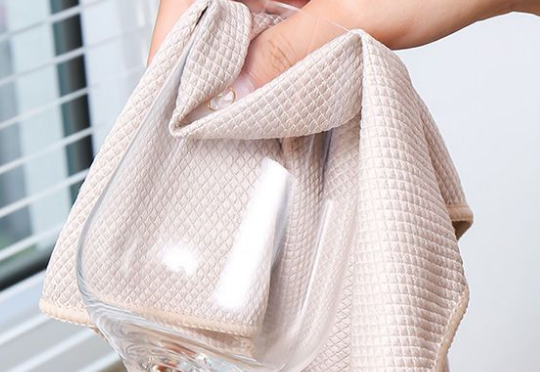
The outside of the bottle is just as important as the inside, especially when it has a custom design that you want to show off. A smudgy bottle just doesn't look professional or appealing. The secret is treating the stainless steel properly. Most steel has a very fine "grain" or pattern of tiny lines from the manufacturing process. When you clean and polish a bottle, always wipe parallel to these lines, not against them. This prevents micro-scratches and makes the surface look much brighter. A soft microfiber cloth is your best friend here because it won't leave lint or scratch the surface. For my clients who display their branded bottles at events, I always give them this tip. A shiny, clean bottle reflects the quality of their brand.
Simple Steps for a Perfect Finish
| Step | Action | Why It Works |
|---|---|---|
| 1. Wipe Down | Use a damp microfiber cloth to remove dust and loose dirt. | Prepares the surface and prevents scratching. |
| 2. Target Spots | Apply a dot of white vinegar to the cloth for fingerprints. | The acid in the vinegar easily breaks down oils. |
| 3. Rinse | Wipe again with a cloth dampened with just water. | Removes any vinegar residue. |
| 4. Buff Dry | Use a clean, dry microfiber cloth to buff the surface. | Removes streaks and creates a brilliant shine. |
What is Not Recommended to Clean Stainless Steel?
You find a tough coffee stain inside your bottle and reach for a heavy-duty cleaner. Before you use it, you wonder if a strong chemical could damage the bottle.
Never use bleach, cleaners with chlorine, abrasive powders, or steel wool on a stainless steel bottle. These harsh chemicals and materials can destroy the steel's natural corrosion-resistant layer, leading to rust, and will permanently scratch the finish.
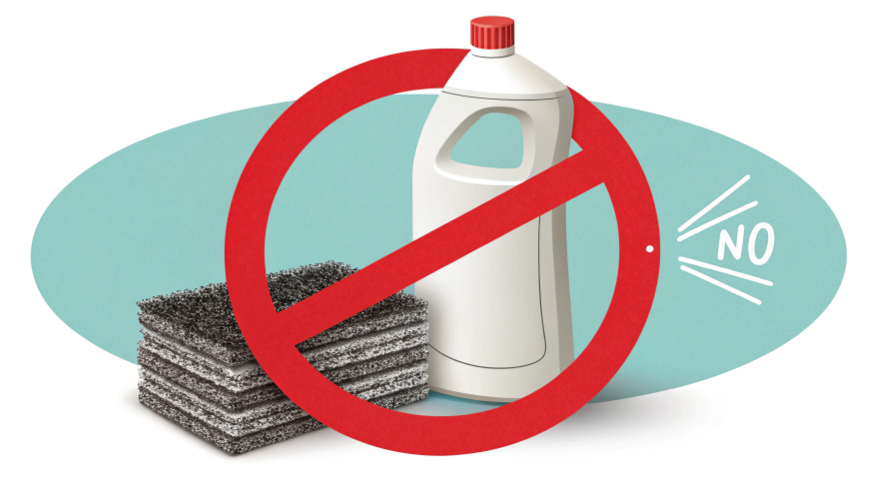
I've seen the damage firsthand. A client once tried to "sterilize" a batch of custom-printed bottles for an event using a diluted bleach solution. Within a day, tiny rust spots started appearing on the inside of every single one. It was a disaster. Here's why you have to be so careful. Stainless steel is not magic; it has a thin, invisible layer of chromium oxide that protects it. Harsh chemicals, especially chlorine, attack and destroy this protective layer. Once it is gone, the steel underneath is vulnerable to rust. The same goes for abrasive scrubbers like steel wool or scouring powder. They will physically scratch away that protective layer, not to mention completely ruin the smooth finish and any custom design on the outside. Stick to soft brushes and gentle, approved cleaners to ensure your bottle lasts.
Can You Put Vinegar in a Stainless Steel Bottle?
Your bottle has a stubborn mineral buildup from hard water or a smell you just can't shake. You've heard vinegar is a good cleaner but worry the acid might be bad for the metal.
Yes, you can and should use diluted white vinegar to clean a stainless steel bottle. It is a safe and highly effective way to sanitize the bottle and remove stubborn mineral deposits or lingering odors. Just rinse it thoroughly afterward.
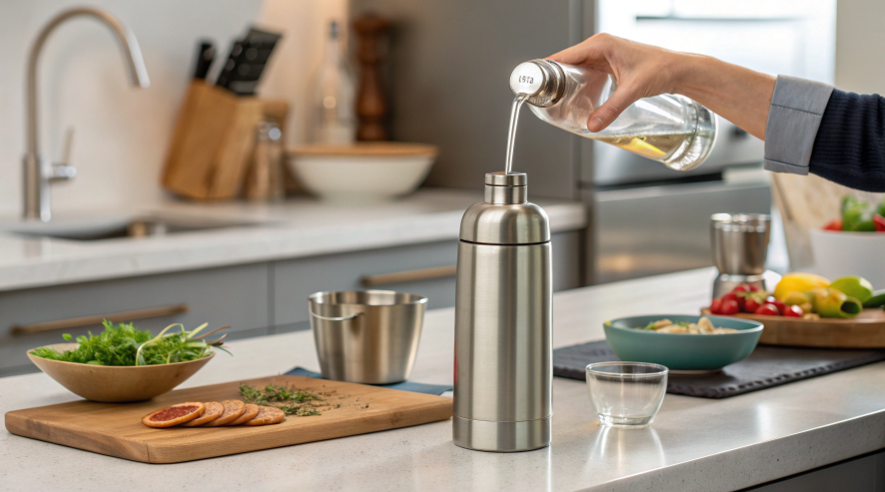
Vinegar is one of the best tools in your cleaning arsenal for stainless steel bottles. The acetic acid in white vinegar is perfect for breaking down the calcium and mineral deposits (limescale) that can build up from hard water. It also works as a great natural sanitizer that kills germs and neutralizes the organic compounds that cause bad smells. I recommend this method to my clients for a monthly deep clean to keep their bottles in top condition. The process is very simple. Just fill the bottle about halfway with a mixture of equal parts white vinegar and water. Close the lid, give it a good shake, and then let it sit for a few hours or even overnight for a really tough job. Afterward, pour it out and rinse the bottle extremely well with warm water until you can no longer smell any vinegar.
Conclusion
Properly cleaning your stainless steel bottle is easy. Just use soap and a brush daily, do a deep clean with baking soda or vinegar weekly, and always avoid harsh bleach and abrasive scrubbers.

